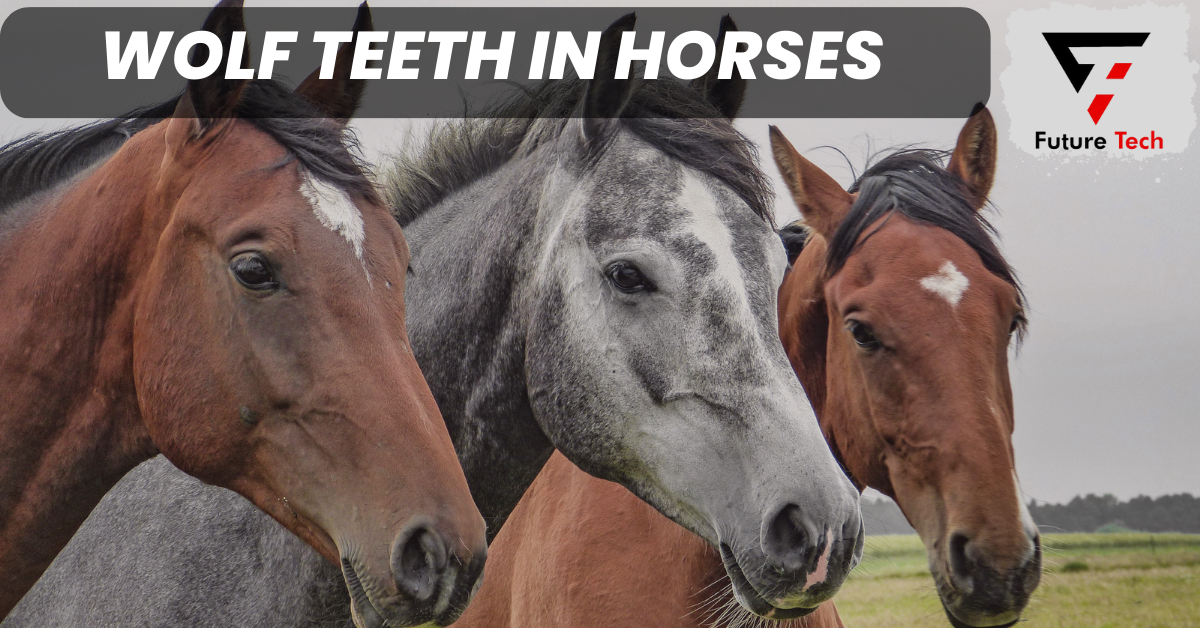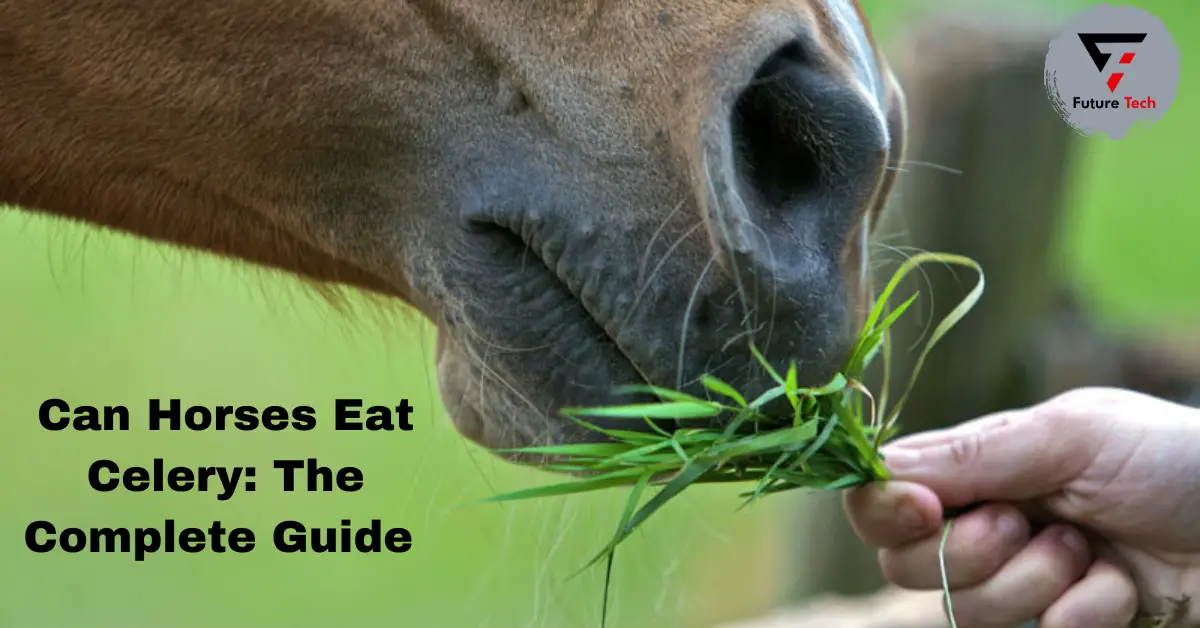Wolf teeth, the first premolar teeth in horses, erupt between five and twelve months of age and are not sex-related. It is often seen in the upper jaw and appears just before the initial cheek teeth. Wolf teeth are vestigial and date back to horses being smaller, forest-dwelling browsers. Since extraction of wolf teeth provides access to the front cheek teeth, it is customary for horses to drive or ride with a bit. The correct extraction method uses a clean, sharp elevator to cut the gum and stretch the periodontal ligament supporting the tooth’s socket. Tetanus prophylaxis is critical in any horse with a tooth extracted, with vaccinations every five years.
What Are Wolf Teeth in Horses?
Another name for wolf teeth is the first premolar. In a horse’s mouth, they are right in front of the first cheek teeth. Wolf’s teeth most often occur in the maxilla or upper jaw, although they may also arise in the mandible or lower jaw. One-sided or bilateral wolf tooth development is possible in horses. Between the ages of five and twelve months, these teeth often begin to erupt in the mouth. These premolars, sometimes called wolf teeth, do not erupt into the mouth later in life as other cheek teeth do.
Historical accounts describe wolf teeth as resembling cheek teeth used for grinding millions of years ago. Back then, wild horses were not so much grazers as they were smaller, forest-dwelling browsers that consumed a variety of woody plant components. Wolf’s teeth were more noticeable because of their diet, which enabled them to consume brushes and twigs. Horses have changed through time to become grazers. Because of this development, wolf teeth have become comparatively tiny and unnecessary, meaning contemporary horses no longer need them.
The History and Development of Wolf Teeth
Wolf’s teeth have a long evolutionary history, beginning with the first horse relatives. These teeth helped grind and process coarse plants, an ability that was once necessary for survival. Wolf teeth’ significance diminished over time as horses adjusted to a diet mainly of grass.
Role in the dental history of horses
Throughout history, horse owners and caregivers have studied and dealt with wolf’s teeth, assigning different meanings and purposes to them. Wolf teeth have long attracted notice and sparked curiosity, prompting everything from crude extraction techniques to complex ceremonies.
Recognizing the Objective
It is still up for debate what the actual function of wolf teeth is. Researchers have put out numerous hypotheses to account for the existence of wolf’s teeth, such as suggesting that they serve as extra grinding surfaces, facilitate food prehension, function as sensory organs, or represent vestiges of a long-extinct horse ancestor.
Are Wolf Teeth Useful for Anything?
Wolf’s teeth have mysterious functions, but real-world uses are frequently illusive. Although some horses appear to have no problems with them, others could be uncomfortable or have dental problems that affect their general health and well-being. Investigating the possible issues that wolf teeth and their interactions with biting and riding may bring is essential.
Recognition and Positioning
It can be challenging to distinguish wolf teeth from other dental features, particularly for horse owners who need to be more knowledgeable about dentistry. You typically see these little, vestigial teeth rostral to the first premolar in the upper jaw. Since their appearance can differ, it is critical to rely on specialist knowledge for precise identification.
Placement inside the Horse Dental Arch
In the horse’s mouth, wolf teeth usually have a unique location between the massive premolars and front incisors. This location may affect their extraction, and interactions with the bit and neighboring dental structures may occur.
Dental Problems and Their Effects on Horse Health
Possible Issues Raised by Wolf Teeth
Wolf fangs are tiny, yet they can cause significant problems for horses. Their presence could make it difficult to bite appropriately, which would hurt and cause discomfort. This would not be good for training and performance. Furthermore, wolf teeth can exacerbate dental conditions like malocclusions, abscesses, and periodontal disease if left untreated.
Relationships between Riding and Bitting
In the equestrian community, there is debate over the connection between biting and wolf teeth. These teeth may cause discomfort and sensitivity in the mouth’s delicate tissues, impacting how the horse responds to rein aids and how comfortable they are when riding.
Dental Conditions Linked to Wolf Teeth
Wolf’s teeth affect equestrian health beyond just dental discomfort; they can cause nasal infections and behavioral abnormalities. These little structures can trigger a chain reaction of secondary problems that you must closely watch and manage appropriately to avoid worsening.
Should wolf teeth become extracted?
Extensive discussions have taken place regarding the contentious issue of whether wolf teeth can cause pain in the mouth. The most prevalent grounds for their removal are custom and customer demand. Cynically, the person who performs the extraction will also receive payment. Traditionally, it has been common to remove wolf teeth because it might be preferable to treat the horse rather than alter other elements, such as riding technique.
Most wolf teeth don’t harm horses in any way, but they concern humans. This is due to:
- A wolf tooth may affect the way molars rasp to create a bit seat, which is a significant benefit for performance horses and involves rounding the edge of the second check tooth to suit the bit.
- When the bit and bridle apply pressure on the cheeks, displaced or sharp wolf fangs might hurt.
- Certain wolf teeth may become loose, unhealthy, or linked to a chronic ulcer, which can hurt.
- Traumatic events like head shaking sometimes link to wolf tooth problems.
- Determining whether wolf fangs hurt a horse is more accessible by conducting a comprehensive scientific study that controls for other variables, including the rider and gear.
Effective wolf tooth extraction is likely to be safe if done correctly. The horse’s ability to take a break while the gum wound heals may also help other problems go away. You should not ride the horse for a maximum of two weeks, or possibly longer, after the extraction to give the gums time to recover and for any bruises to subside.
Preventive and Administrative
Early Identification and Surveillance
Adequate care of wolf teeth requires early identification. Close observation of young horses during their dental development minimizes potential effects on the health and performance of the animal by enabling prompt intervention and preventive actions.
Dental Hygiene Protocols for Wolves
A comprehensive dental care plan must include wolf teeth to preserve the oral health of horses. Proficiency in performing dental examinations, encompassing wolf teeth assessment, is crucial. Proper dental care, including cleanings and floating, can help prevent problems with these mysterious little teeth in the future.
Real-World Issues and Solutions
Analyzing case studies from real-world situations offers essential insights into the pragmatics of handling wolf teeth. Horse owners can learn more about the intricacies, difficulties, and possible results of managing wolf teeth by investigating various instances and the corresponding solutions.
Perspectives from Experts in Equine Dentistry
Views from the Veterinarian Field
Veterinarians are essential for identifying, diagnosing, and managing problems associated with wolf teeth. Their expertise goes beyond dentistry to the horse’s general health and welfare. Speaking with a veterinarian might offer insightful advice on handling wolf teeth in horses.
Contributions from Dentists for Horses
Equine dentists are specialists with specific training and knowledge in the field. Their viewpoint and understanding of the complexities of wolf teeth might provide unique insights into possibilities for diagnosis, treatment, and prevention. Working with an equine dentist can holistically improve the care of wolf teeth.
Expert Guidance on Managing Wolf Teeth
Getting assistance from dental professionals is essential for making informed decisions on wolf teeth because there is a lot of contradicting information and opinions. These professionals can examine the particular situation of each horse, weigh the possible hazards, and offer customized advice for treating wolf teeth.
Current Research on Horse Wolf Teeth
Research projects are underway to try and solve the riddles of wolf teeth. Scientific research and developments in equine dentistry shed essential light on the nature, frequency, and possible effects on equine health. Keeping up with recent studies can facilitate making evidence-based judgments for managing wolf teeth.
Conclusion
This thorough examination of wolf teeth in horses emphasizes essential details about their definition, morphology, frequency, and growth trends. Horse owners must comprehend the historical background, possible dental problems, extraction techniques, and related ramifications for horses of various ages and breeds.
Equine owners can make well-informed judgments concerning their horses’ care if they possess comprehensive knowledge about wolf teeth. Working with veterinarians and equine dentists and providing continuous care and observation guarantees horses’ best interests concerning these mysterious tooth formations.




